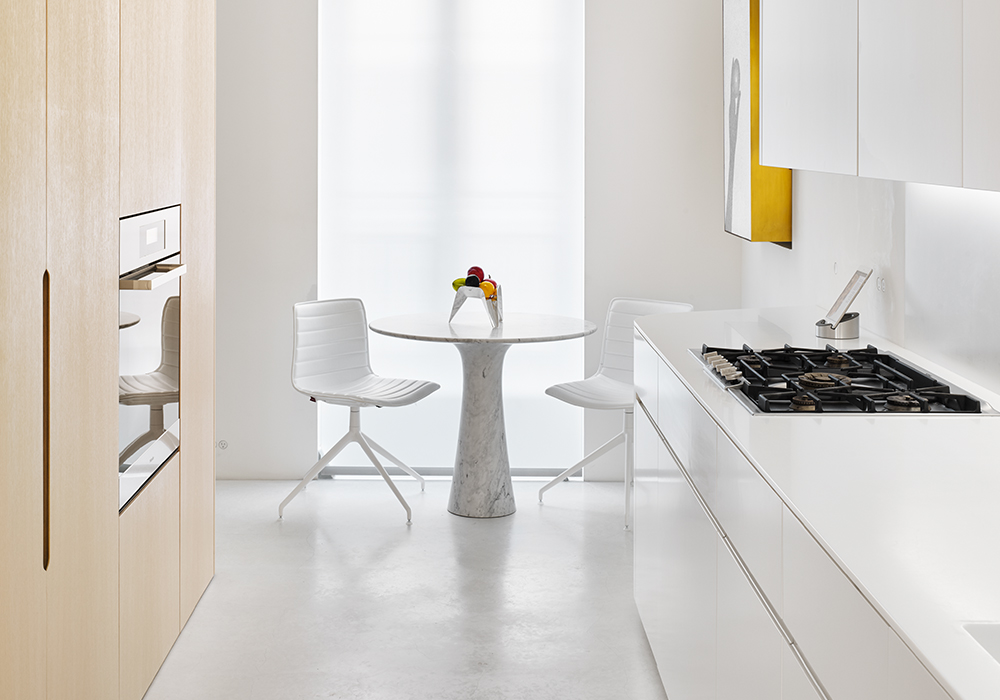
Wellness and the Home – Circadian Lighting
10.09.20Architecture: Matthew Baird Architects, Design: Ilene Wetson, Photography: Elizabeth Felicella
In times like these, the elemental purpose of the home is shelter. Having mastered the elements, we turn to the next set of threats: air pollution and pathogens, impure water, and lighting systems that negatively affect our sleep and health.
Founder of New York City’s Rusk Renovations and professor at Columbia University, John Rusk explores the emerging technology of circadian lighting.
All animals, including humans, are regulated in a “circadian rhythm” of wake and sleep cycles by the changing colour and intensity of light. We wake to early morning “warm” or reddish-tinged dim light. The light energises us as it becomes increasingly intense and blue white during the day, and then in the evening, the light becomes warm again and fades to calm us into sleep.
Two hundred years ago, our lighting mimicked nature with the little artificial lighting we had provided by warm, dim candlelight and fires. For the last century, we have relied on incandescent lighting which produces bright whites when turned to maximum power, but also allowing us to dim lights to help us relax into the evening.
But for the last twenty years, we have relied on energy efficient Light Emitting Diode (LED) lights. These lights use a fraction of the electricity of their incandescent cousins, but they also maintain their bright white colour, even as they dim.
Computer and smart phone manufacturers responded using “night shift” settings to make our screens dimmer and warmer than the bright white that glows in the daytime.
Rusk uses the Delos-created DARWIN “Brain” to control lighting systems to simulate the natural progression of the sun. The DARWIN system aligns the colour temperature of the home, starting off the day with a dawn simulation program that wakes residents naturally by slowly raising the level of lights and changing the colour from warm to bright blue white. The body is gently awakened as it completes REM cycles before responding to the lighting changes around it. As the day progresses, the bright blue light feels clean and energising. As the day winds down, the lighting automatically calms with lower intensities and a warmer colour to prepare the body for sleep.
Our lighting environment can now be dealt with effectively through integrated technology that provides the proper environment for our circadian systems to once again sync with nature.
Architecture & Design: Haute Architecture DPC, Photography: Annie Schlecter
Learn more about Rusk here: ruskinc.com
Abode Affiliates
COPYRIGHT © Abode2 2012-2024























































































































































































































